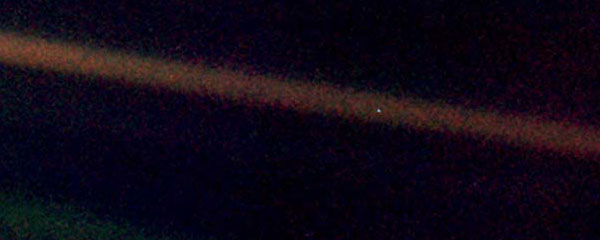In 1990, Voyager 1 used its camera for the last time and took a panoramic photo of the solar system, including that famous photo of the Earth as a tiny, pale blue dot caught in a sunbeam. (Or, technically, a lens flare.) At the time, the probe was about six billion kilometers away, or 40 times the distance between the Earth and the sun.
Now, after covering another 12 billion kilometers, it may have become the first human-made object to leave the solar system in early September. And despite moving faster (on average) than any other object we’ve ever built, it took 35 years to get that far.
I was born almost four years after Voyager 1’s flyby of Saturn, when its primary mission ended, so I spent my childhood assuming it was long gone already. The fact that it’s still racking up milestones well into my adulthood is a pretty good example of how hard it is to comprehend the scale of the universe we live in.
Like any kid whose creative inspirations included Star Trek and more Star Trek, I’ve spent an inordinate amount of time both following the last decade’s raft of discoveries about extrasolar planets, stars, and other amazing objects that we’ll probably never even get a good look at within my lifetime, and trying to explore it in literature instead. The trouble is that most of the story tricks that reconcile interstellar travel and human time frames involve finding some way to write off the incredible distance between everything, which is kind of a critical element to understanding the nature of it all.
In fairness, Star Trek was part of the problem, since it was created in the era of episodic television where you were expected to find a new planet every week. The trope had been around since at least the ’30s, and it serves an obvious storytelling purpose; when you’re telling a story about an epic journey across land or sea, there’s plenty of opportunity for encounters — villages, bandits, giant squids, whatever — but chronicling the emptiness of space only really works for a very specific kind of story. It’s tricky to envision ways of crossing the void in a dramatically reasonable amount of time, while still respecting the awesomeness of the journey.
